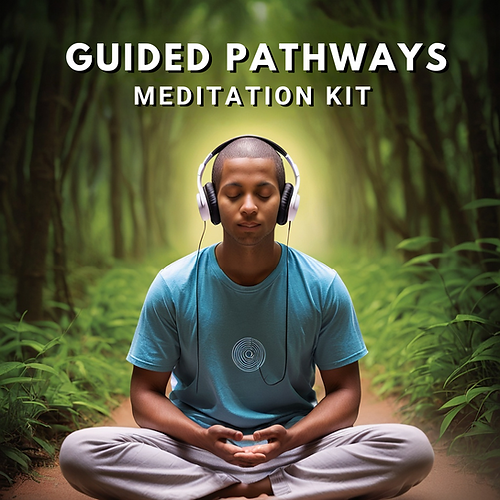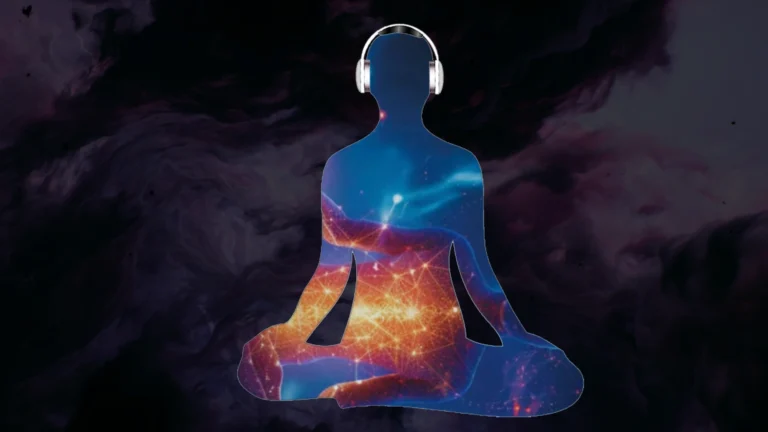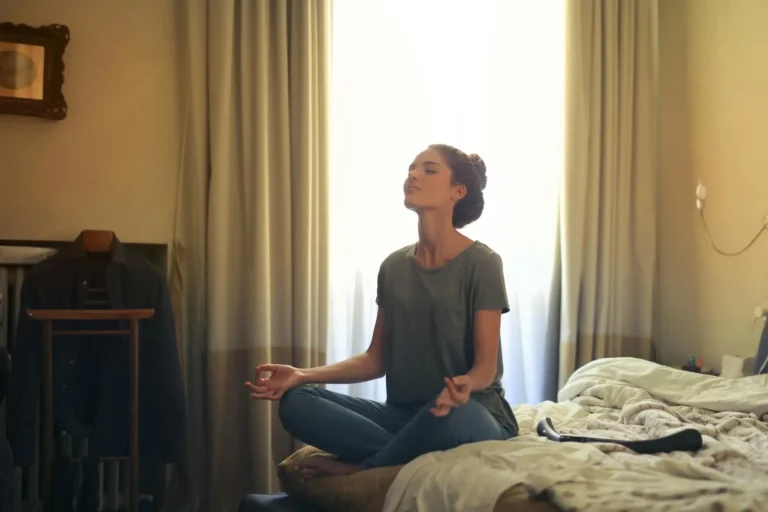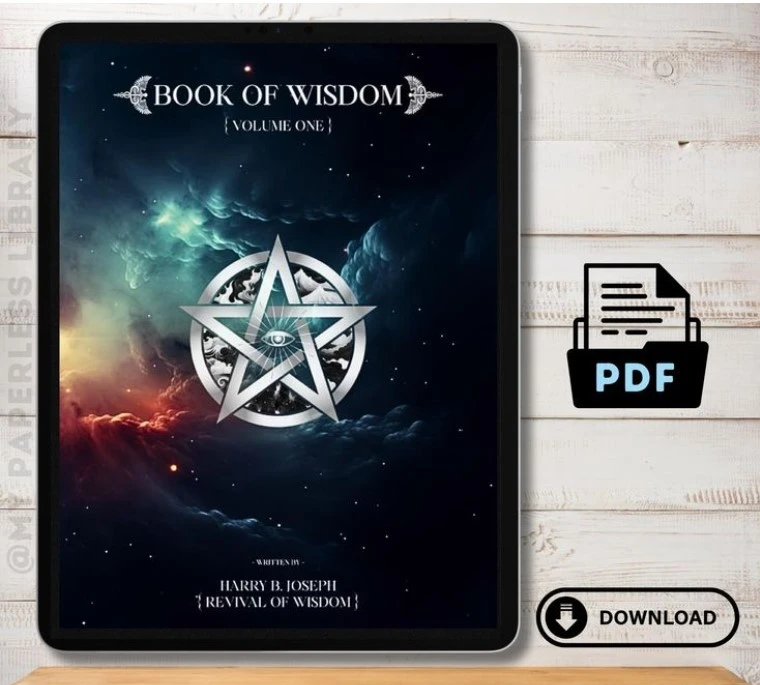Gratitude Meditation Practice: 5 Easy Steps for Beginners
Gratitude meditation is a simple, proven way to bring more peace, joy, and mindfulness into your day. Have you ever felt like life is moving a little too fast, and you’re missing the beauty of the present moment? If so, you’re not alone. With endless notifications, to-do lists, and stress piling up, it’s easy to overlook the good things in life. But with gratitude meditation, you can gently shift your focus back to what truly matters and start appreciating the here and now.
Table of Contents
Whether you’re new to meditation or exploring ways to deepen your practice, this guide will walk you through five simple steps to start practicing gratitude meditation today. And the best part? You don’t need any special equipment or experience—just a few quiet minutes and a willingness to show up for yourself.
Let’s dive in!
What Is Gratitude Meditation?
The Power of Gratitude
Gratitude is more than just saying “thank you.” It’s a mindset—a way of recognizing and appreciating the good in your life, even during tough times. When you shift your focus to what’s working instead of what’s lacking, amazing things can happen. Science backs this up too! Studies show that gratitude improves mental health, boosts relationships, and even enhances physical well-being.
Combining Gratitude with Meditation
Gratitude meditation blends mindfulness with intentional thankfulness. It’s a focused practice that brings your attention to the present moment while guiding you to reflect on what you’re grateful for. Unlike traditional meditation that might focus on breath or body awareness, practicing gratitude meditation centers your thoughts on appreciation—an incredibly uplifting shift.
Step 1: Create a Comfortable Meditation Space
Before you even start, set the stage for your practice.
Why Your Environment Matters
Your physical environment influences your mental state. If you’re trying to meditate in a cluttered, noisy, or uncomfortable space, chances are your mind will follow suit. By creating a peaceful corner, you’ll naturally feel more relaxed and open to gratitude.
How to Set It Up
- Choose a quiet place: It could be a corner in your bedroom, a spot in the garden, or even a cozy seat by the window.
- Add calming elements: Candles, soft lighting, incense, or nature sounds can help.
- Minimize distractions: Turn off notifications and let others know you’re taking a few moments for yourself.
Even just five minutes in a quiet, intentional space can work wonders.
Step 2: Set a Clear Intention
Before beginning your meditation, ask yourself: “Why am I doing this?”
Aligning With Purpose
Whether it’s to feel more joy, improve your mental health, or reconnect with yourself, setting a clear intention gives your meditation focus. It acts like a gentle anchor that brings you back when your thoughts wander.
Example Intentions
- I want to appreciate the small moments in my day.
- I’m practicing gratitude to feel more connected.
- Today, I’m focusing on the good things I often overlook.
Don’t overthink it—just feel into what matters to you right now.
Step 3: Focus on Your Breath and Body
Start with Stillness
Find a comfortable seated position, close your eyes, and take a few deep breaths. Feel the air entering your nose, filling your lungs, and slowly leaving your body. This breathwork signals your nervous system that it’s safe to relax.
Grounding the Body
Bring your attention to your body:
- Notice your feet on the ground.
- Feel the rise and fall of your chest.
- Relax your shoulders, face, and hands.
This step helps you become fully present, which is essential when practicing gratitude meditation.
Step 4: Gently Bring Gratitude to Mind
Now that you’re centered and calm, it’s time to invite gratitude in.
What to Focus On
Start with something simple:
- A person you care about
- A recent kind gesture
- A beautiful moment from your day
- Your health, a meal, your home—whatever you feel thankful for
Let that feeling of appreciation grow in your heart. Imagine it radiating through your body, warming you from the inside out.
Guided Gratitude Prompts
Use prompts to stay focused:
- Today, I’m grateful for…
- I appreciate how it feels when…
- Thank you for…
You can say these silently or speak them aloud. Allow your gratitude to flow freely—there’s no wrong way to feel thankful.
Step 5: Close Your Meditation with Reflection
Gentle Return
After a few minutes (or longer if you wish), slowly bring your awareness back. Wiggle your fingers, open your eyes, and take a deep breath. Don’t rush. Let the gratitude you cultivated settle into your day.
Journal Your Experience
Take a minute to jot down:
- What you felt grateful for
- How the meditation made you feel
- Any insights or emotions that came up
Writing it down deepens the experience and reinforces the benefits.
Bonus Tips to Enhance Your Gratitude Meditation Practice

1. Be Consistent but Flexible
Daily practice is ideal, but don’t stress if you miss a day. Even 2–3 times a week can have huge benefits.
2. Use a Guided Meditation
If you’re new to practicing gratitude meditation, guided meditations can be super helpful. Look for them on YouTube, meditation apps, or online meditation courses.
3. Pair It With Other Habits
Link meditation to something you already do—like brushing your teeth or making coffee. This helps you stay consistent.
4. Take a Meditation Course
If you’re ready to go deeper, consider enrolling in a meditation course. Many include structured lessons on gratitude, mindfulness, and building a regular habit. Courses give you community support, expert guidance, and accountability to stay on track.
The Science Behind Gratitude and Meditation
Studies have shown that both meditation and gratitude have individual benefits, but together? They’re a powerhouse.
Proven Benefits of Practicing Gratitude Meditation:
- Reduces stress and anxiety
- Boosts mood and emotional resilience
- Improves sleep quality
- Enhances focus and mental clarity
- Strengthens relationships and empathy
Incorporating gratitude into your mindfulness routine activates positive brain circuits, literally rewiring your mind to focus on the good.
Common Challenges (and How to Overcome Them)
I don’t feel grateful today.
That’s okay. Gratitude isn’t about ignoring pain or pretending everything’s fine—it’s about finding something good, no matter how small. Even a hot shower or a sunny sky counts.
My mind keeps wandering.
Totally normal. When your thoughts drift, gently return to your breath or your gratitude prompt. Over time, focus gets easier.
I forget to practice.
Try setting a daily reminder on your phone or placing a sticky note where you’ll see it. Even better, make it part of your existing routine.
Tools That Meditation Beginners and Gurus Use to Deepen Their Practice
Meditation isn’t just about sitting still; it’s about creating an experience that calms your mind, body, and spirit. While beginners can start with just their breath, experienced meditators—including gurus—often use additional tools to deepen their practice. One of the most powerful tools? Meditation music.
The Power of Meditation Music
Meditation music has been used for centuries by spiritual teachers, yogis, and meditation masters to guide and enhance their practice. The right music can help you:
- Calm your thoughts
- Anchor your focus
- Create a peaceful atmosphere
- Promote deep relaxation and mindfulness
Whether you’re just starting out or you’ve been meditating for years, integrating music into your routine can make a world of difference.
Why Choose Our 120-Day Meditation Music Kit?

If you’re looking to truly transform your meditation journey, our 120-Day Meditation Music Kit is perfect for you. This kit is designed to guide you step by step with:
- 120 days of carefully curated meditation music: Each day is a unique track, tailored to support your practice and keep your mind focused. From calming soundscapes to deeper, more transformative tones, these tracks are designed to guide you into a deeper state of gratitude and mindfulness.
- Step-by-step instructions: Our easy-to-follow guide will help you integrate meditation music into your daily routine, giving you a structured path to follow for the next 120 days. With detailed instructions for beginners and advanced meditators alike, you’ll know exactly how to use the music for maximum benefit.
- Exclusive eBook: A comprehensive meditation eBook that walks you through the benefits of music in meditation, tips for enhancing your practice, and journal prompts to track your progress.
Enhance Your Meditation Practice with the Right Tools
The combination of music and structure is powerful—helping you stay consistent, focused, and deeply connected to your practice. Whether you’re looking to cultivate more gratitude or find a greater sense of inner peace, our kit provides everything you need for long-term success.
👉 Ready to take your meditation to the next level? [Click here to get your 120-Day Meditation Music Kit] and start your transformative journey today!
Final Thoughts: Start Small, Stay Grateful
You don’t need an hour a day, a meditation cushion, or a Zen garden to start practicing gratitude meditation. All you need is a few minutes, an open heart, and a little consistency.
The five steps you learned today are simple, but incredibly powerful:
- Create a calm space
- Set your intention
- Focus your breath and body
- Bring gratitude to mind
- Reflect and integrate
Start today—even just one minute counts. You’ll be amazed at how this small act of mindfulness can ripple through your entire day, mindset, and life.
Ready to Take the Next Step?
If you’re feeling inspired to deepen your practice, now’s a great time to invest in yourself. Explore our curated meditation courses designed for beginners like you. Learn techniques, get personalized support, and join a community of like-minded individuals on the same journey.
🌿 Your peaceful, grateful, more mindful life starts today. You’ve got this. 🌿
Frequently asked questions (FAQ)
What is Gratitude Meditation and How Can It Benefit Me?
Gratitude meditation is a mindfulness practice where you focus on the things you’re thankful for in your life. By taking a few moments each day to reflect on what you appreciate, you can shift your mindset to one of positivity and abundance. This practice has been shown to reduce stress, improve emotional well-being, and increase overall happiness by helping you cultivate an attitude of gratitude. Whether you’re a beginner or experienced meditator, gratitude meditation can deeply enhance your sense of inner peace and joy.
How Can I Start Practicing Gratitude Meditation as a Beginner?
Starting gratitude meditation as a beginner is simple! Begin by finding a quiet space where you can sit comfortably. Close your eyes and take a few deep breaths to center yourself. Then, start thinking about the things in your life that you’re thankful for—big or small. These could include your family, health, or even a moment of kindness from someone. Focus on these feelings of appreciation for a few minutes, allowing your gratitude to fill your mind and heart. Over time, gratitude meditation will help you create a more positive, mindful approach to your everyday life.
How Long Should I Practice Gratitude Meditation Each Day?
There’s no set rule for how long you should practice gratitude meditation, but even just 5 to 10 minutes a day can make a big difference. The key is consistency. As you grow more comfortable with the practice, you can gradually increase the duration. Some people prefer to meditate for 20–30 minutes to dive deeper into their gratitude, while others find shorter sessions more effective. The important thing is to make gratitude meditation a regular part of your routine to enjoy its full benefits.
Can Gratitude Meditation Help Me Manage Stress?
Yes! Gratitude meditation is a powerful tool for stress management. By shifting your focus from worries or stressors to positive aspects of your life, you can train your mind to respond more calmly and with greater resilience. When you practice gratitude meditation, you are encouraging your brain to focus on feelings of joy, appreciation, and contentment, which naturally reduces the effects of stress and anxiety. This makes gratitude meditation a great daily practice to help maintain a balanced, stress-free mindset.







